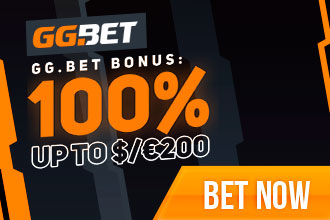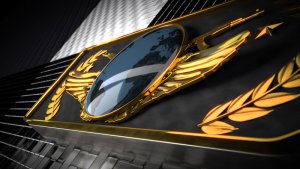NinjaBoogie and the Ruthless Side of Esports
Within recent years, Esports in general has undeniably grown in popularity. This has led to more financial rewards for everybody, including players, teams, owners, and organisations. Like other sports, when the financial gain increases, so do the issues. Esports is an industry that is beloved, and for great reasons, but the controversies are a part of it too, such as the recent scandal surrounding Dota 2 pro NinjaBoogie.
NinjaBoogie’s Departure
In Dota 2, it is not uncommon to see well-known players leave teams in every region. With a game so popular across the world, and prize pools that dwarf other professional Esports, each team must aim for perfection at any cost. This then places pressure on not only teams to strive for great results, but also on players to perform consistently to stay in the professional circuit. Unfortunately, one of the consequences of this recently has been Michael “NinjaBoogie” Ross Jr’s firing from Team SMG, collateral damage of the constant demand for success.
The news had broken on 20th May when Team SMG posted on Twitter, a message thanking their former Support. “We would like to thank NinjaBoogie for his enthusiasm, hard work and dedication for Team SMG during our time together. Today, we part ways. Thank you NinjaBoogie. Keep boogieing, even under gun fire”. Whilst on the surface it seems like just another departure, it was the start of a large controversy.
NinjaBoogie responded via Twitter. “Kicked because my mom was on her last days and they assumed it would affect my performance. I already knew for some time that this day will come. Since she had stage 4 cancer. She passed away on Monday. Imagine being fired from a job because you are about to lose a loved one.” Since releasing this message, Team SMG have not responded.

With an incident of this magnitude occurring, it would clearly affect any person and this could potentially lead to a performance dip, but what is not clear is how could such a well-known and beloved player drop straight out of a roster. A common practice amongst teams is to bench players, which can allow others to fill in until the first-choice selection returns. The fact he was dropped has led to a lot of anger amongst both fans and players who see it as fundamentally inhumane to do this to someone’s career.
Other controversies
It is not the first time an issue of this magnitude has happened. Yearly, we see players being dropped after long periods, and in some cases after just weeks. In what is a results-based industry, there is a fast-growing trend of cutthroat decision making. North America’s most decorated LoL player Yiliang “Peter” “Doublelift” Peng departed ways with TSM in 2018.
As it has arisen recently in 2021, it was down to issues with management, as he and a former teammate Andy “Reginald” Dinh would turn against each other. Doublelift alleged that due to Reginald’s handling of the roster, it had made the team difficult at times to play for. He also alleged harassment and somewhat abusive treatment of players, something that Reginald has repeatedly denied.

Over in the Call of Duty scene, we saw star player Cuyler “Huke” Garland quite suddenly dropped from Dallas Empire, after admitting to Adderall usage. The Dallas management have been adamant that Huke was dropped for a lack of performance and issues with gameplay, but the accusation does persist and the controversy never really settled.
Team Envy owner Mike “Hastr0” Rufail would mention he was proud of Huke opening up about his usage. Despite him making a strong impact in-game during their lacklustre CDL 2021 season start, he had been dropped. Huke would go on to sign for LA Thieves, whilst Dallas Empire would conclude their season with a strong 3rd place finish in CDL 2021 Championships.
It feels like there’s almost constant drama in Esports of some kind. Worth a mention is London Spitfire dropping Prov1de for what seemed like justified if scandalous reasons. We also can’t forget the time that the once-top-tier Team Griffin collapsed after what seemed to be years of poor management, or that infamous video where CLG threatened their rosters with being dropped live on a video.
Across Esports in general, there are always two sides to each story. From a management and owner standpoint, results are king. From a player’s perspective, they are still human and will face difficulties, which can ultimately lead to both parties clashing. In an industry where the stakes are high, large conflicts are common.
Esports Growth
If we rewind back to 2016, there had still been player drops, management changes and drama. Despite these issues occurring, they had less of a public scope on. This can be linked to the 2016 net worth of the Esports industry being at $493 million. Fast-forward to 2022 and Esports net worth has increased to approximately $1.6 billion. Areas such as ticket sales, merchandise, sponsorships, viewing, and media rights were amongst the highest growth areas.
In terms of specific scenes, Dota 2 experienced the biggest growth in tournament winnings. Their TI yearly completion in 2011 had a prize of $1.6 million. Leap forward to TI 2021, and the prize pool climbed just over $40 million. Undoubtedly, it is great as owners can afford many luxuries and can increase many standards for their teams. For the players, they can lead a viable career, provide for their families, and grow a brand. There are plenty more benefits for each party, the list is endless.

However, this can lead to a ruthless side from both players and teams. Players must choose options that will benefit themselves over others, often at a cost to their wellbeing. Team management must make decisions that could harm others, but when it is in the best interest of the team it must be done. When standings, finances and survival are on the line, both parties must make rough decisions.
More Money, More Problems
How could the pressure be taken off? How can the ruthless side be negated? Like any other successful sport, it is highly unlikely that the high-pressure side can be fully taken out. In one of the top three growth industries in terms of global value, Esports will continue to see the same number of, if not more, cutthroat decisions like with NinjaBoogie. As seen in many professional sports, if results aren’t seen within weeks or months, managers and players are removed regularly. This is already something we see in high-grossing Esports organisations.
If Esports continues the climb, we could see more of the same behaviour more frequently throughout top earning scenes. For example, professional CSGO sees regular roster changes across many of its organisations. From top to bottom, if things are not going well in results or behind the scenes, somebody will be departing. Despite the harsh realities modern Esports bring, there are some viable options that could ease tensions and protect both parties.
Potential Solutions
Having nnions for willing scenes could provide the voice and support needed. With the increase in finances, having an outlet to raise grievances and disputes with is not an outlandish option. They could provide a mediator role, in which solutions could be found, or in the worst case, legal protection for the players. The only issue here may be the resistance to unions from the franchises themselves. While the top talent in Esports isn’t completely replaceable, there’s a feeling that a player could be much more easily replaced than in traditional sports for suggesting unionizing.
Another solution can be to improve the PR and representative’s field. We are aware that they already exist, but if investment increases in this area, we could start to see a much larger impact for the players. Better agents for players could help secure better conditions all around in the same way as professional football player.
Regardless of these solutions, the Esports industry is still projected to rise in value, which will inevitably result in more ruthless activity as with NinjaBoogie and Team SMG. With any luck, with the industry being more and more recognised as a ‘legitimate’ sporting activity, the protections and regulations for players will come into line with traditional sports as well.

 LOL
LOL CS:GO
CS:GO Dota 2
Dota 2 Valorant
Valorant Fortnite
Fortnite Overwatch
Overwatch StarCraft
StarCraft Call of Duty
Call of Duty






















 EN Global
EN Global  BR Português
BR Português